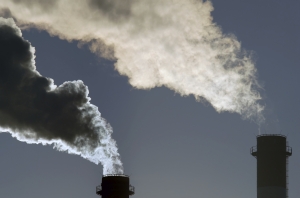Yesterday we released our submission to the government’s Emissions Reduction Fund consultation (available for free download here), which contained the Australian market’s first independent outlook on abatement supply and auction prices under the government’s proposed Direct Action Plan (the full supply and price outlook can be found here).
In this Insights Article, we provide a summary of the outcomes of our initial supply and pricing outlook in order to provide some feedback on the shape of the emerging ERF abatement market, and how it impacts companies bidding into the reverse auction mechanism.
Unlike a carbon price, which is the amount paid by companies for the right to pollute, an ‘abatement price’ under the Coalition’s Direct Action Plan refers to the price paid by the government to purchase one tonne of emissions abatement through its Emissions Reduction Fund.
The Coalition has previously announced that participating businesses that bid into the ERF would likely be paid between $10 and $15 for each tonne of carbon saved, until the expiry of the government’s $2.55 billion in funding.
Our initial outlook suggests that the government is on the money in terms of its year one pricing expectations – we currently project that businesses or developers bidding into the ERF (as per current policy settings) would be paid an average of $13 in fiscal year 2015 for each tonne of carbon they save. The price of abatement is forecast to increase from fiscal years 2015-18, averaging $20 over the period.
Our average $20 per tonne forecast over FY15-18 assumes baselines are set based on five-year historical levels of company emissions intensity, which we consider a ‘loose’ baseline, likely to lead to high volumes of cheap abatement bid into the ERF from companies able to beat their baseline and create ‘emissions reduction credits’.
This ‘loose’ baseline creates a ‘high’ supply scenario, in which we anticipate that approximately 124 million abatement units would be bid into the ERF from FY15-18, comprising 96 million emissions reduction units supplied by companies that are beating their emissions intensity baselines and 28 million Australian Carbon Credit Units from the Carbon Farming Initiative.
As a result, assuming policy stays the way it is currently structured, emitting companies stand to play a significant role in the creation of emissions reduction credits, bidding credits the ERF based on their understanding of the shape of the market and the likely auction prices which are successful in the competitive bidding process.
To demonstrate the importance of emissions intensity baselines driving abatement supply and ERF auction prices, we also ran a ‘low’ supply scenario, with emissions intensity baselines set at more stringent levels, limiting supply by strengthening the government’s requirement for emissions reductions funded by the ERF to be ‘additional’ to business-as-usual.
In this ‘low’ supply scenario, we projected that abatement prices were likely to average $40 over the FY15-18 period, with cumulative abatement supply reducing from 124 million to 81 million abatement units. The higher price would support a greater investment in future land-use projects, with the cumulative supply of ACCUs increasing to 43 million.
Higher prices in the ‘low’ supply scenario do not mean the government‘s budget will exceed its $2.55 billion purse – instead, it reflects that the government will buy different types of abatement. In this price scenario, supply from companies reducing emissions intensity against their baselines dropped to 38 million units, with the higher price enabling CFI projects to better compete with liable company emissions reductions in the competitive bidding environment.
Of interest is that overall emissions were nearly identical under each scenario. Despite the greater volume of abatement credits sold into the ERF in the ‘high’ supply scenario, this does not necessarily represent an increase in emissions abatement, with the majority of extra abatement credits created as a result of how the baseline is drawn, rather than due to any increased investment in sequestering emissions.
As such, a higher supply of abatement credits into the ERF does not represent a reduction in actual emissions – under both our high and low scenarios we estimate Australia would be about 85 million tonnes short in FY18 of the emissions trajectory required to meet Australia’s 5 per cent emissions reduction target – but it does represent a potential opportunity for companies seeking to bid into the ERF, and out-compete CFI project developers facing higher barriers and project costs.
The design of the baselines and ERF eligibility rules have not yet been finalised – we encourage firms to get a better feel for overall supply and market balance according to a range of baseline methodologies. There remains potential for a large amount of additional demand for abatement should baselines be recalibrated to better meet environmental objectives, bringing with it lower supply and increased risk of liability.
How these policy settings influence supply, auction price trajectories and each firm’s ability to bid into the ERF remain critical watches.
To that end, you can access our full Australian supply and ERF price outlook here, or download our public submission to the government’s ERF consultation process here.
Regards,
The RepuTex Team
Australian Emissions Markets










